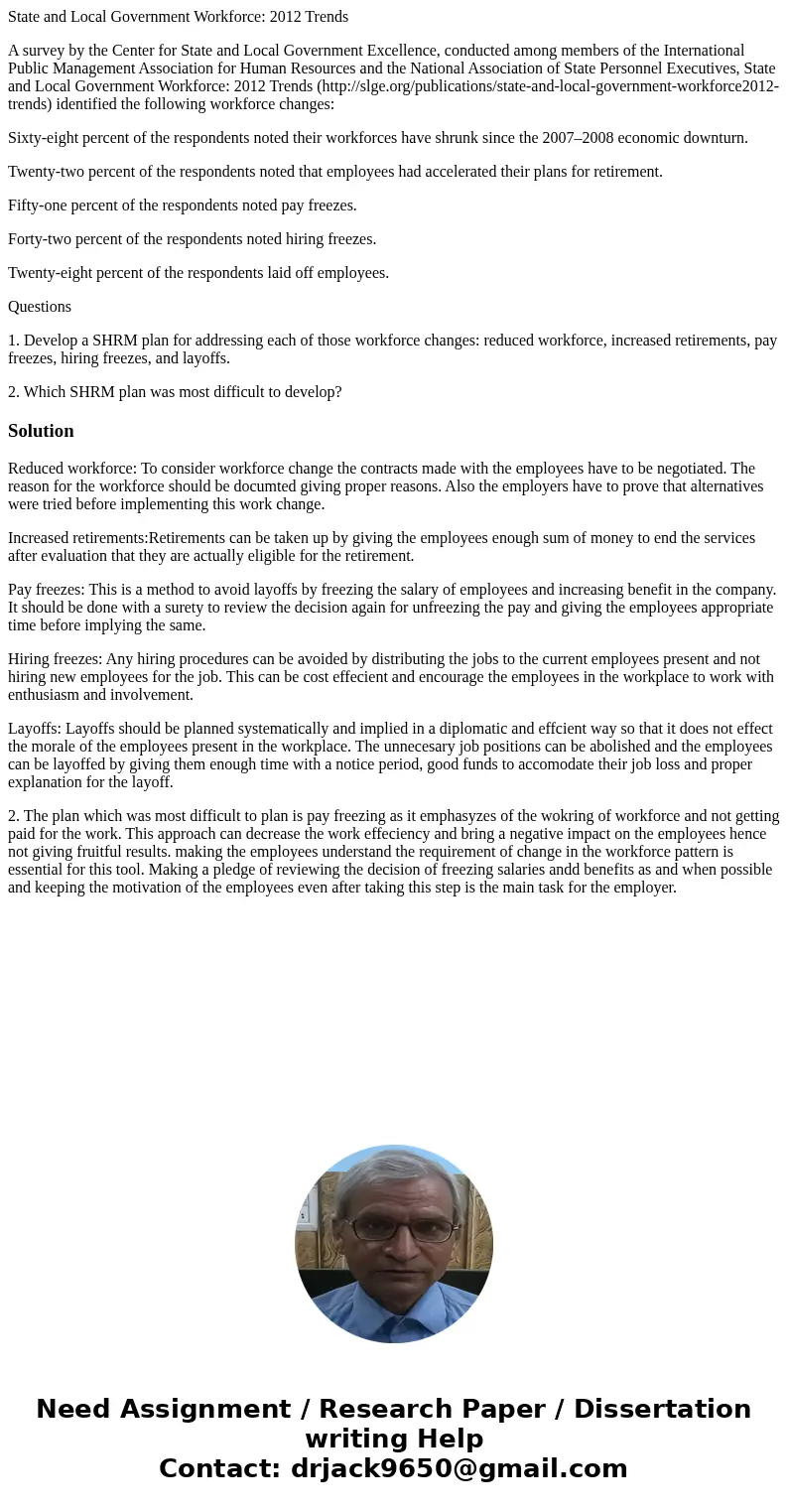State and Local Government Workforce 2012 Trends A survey by
State and Local Government Workforce: 2012 Trends
A survey by the Center for State and Local Government Excellence, conducted among members of the International Public Management Association for Human Resources and the National Association of State Personnel Executives, State and Local Government Workforce: 2012 Trends (http://slge.org/publications/state-and-local-government-workforce2012-trends) identified the following workforce changes:
Sixty-eight percent of the respondents noted their workforces have shrunk since the 2007–2008 economic downturn.
Twenty-two percent of the respondents noted that employees had accelerated their plans for retirement.
Fifty-one percent of the respondents noted pay freezes.
Forty-two percent of the respondents noted hiring freezes.
Twenty-eight percent of the respondents laid off employees.
Questions
1. Develop a SHRM plan for addressing each of those workforce changes: reduced workforce, increased retirements, pay freezes, hiring freezes, and layoffs.
2. Which SHRM plan was most difficult to develop?
Solution
Reduced workforce: To consider workforce change the contracts made with the employees have to be negotiated. The reason for the workforce should be documted giving proper reasons. Also the employers have to prove that alternatives were tried before implementing this work change.
Increased retirements:Retirements can be taken up by giving the employees enough sum of money to end the services after evaluation that they are actually eligible for the retirement.
Pay freezes: This is a method to avoid layoffs by freezing the salary of employees and increasing benefit in the company. It should be done with a surety to review the decision again for unfreezing the pay and giving the employees appropriate time before implying the same.
Hiring freezes: Any hiring procedures can be avoided by distributing the jobs to the current employees present and not hiring new employees for the job. This can be cost effecient and encourage the employees in the workplace to work with enthusiasm and involvement.
Layoffs: Layoffs should be planned systematically and implied in a diplomatic and effcient way so that it does not effect the morale of the employees present in the workplace. The unnecesary job positions can be abolished and the employees can be layoffed by giving them enough time with a notice period, good funds to accomodate their job loss and proper explanation for the layoff.
2. The plan which was most difficult to plan is pay freezing as it emphasyzes of the wokring of workforce and not getting paid for the work. This approach can decrease the work effeciency and bring a negative impact on the employees hence not giving fruitful results. making the employees understand the requirement of change in the workforce pattern is essential for this tool. Making a pledge of reviewing the decision of freezing salaries andd benefits as and when possible and keeping the motivation of the employees even after taking this step is the main task for the employer.

 Homework Sourse
Homework Sourse